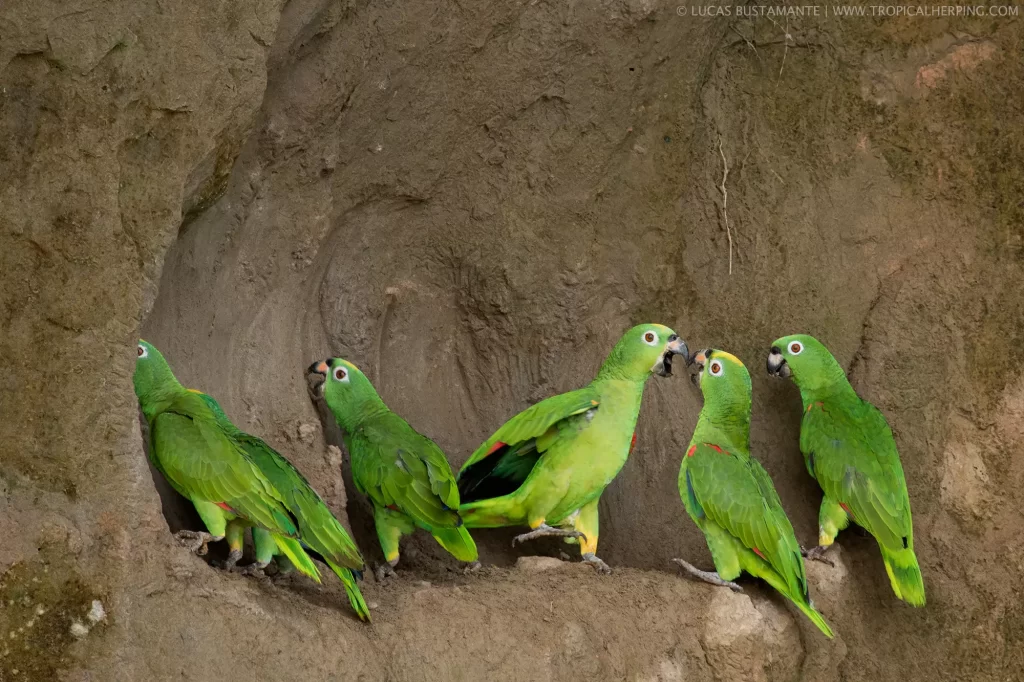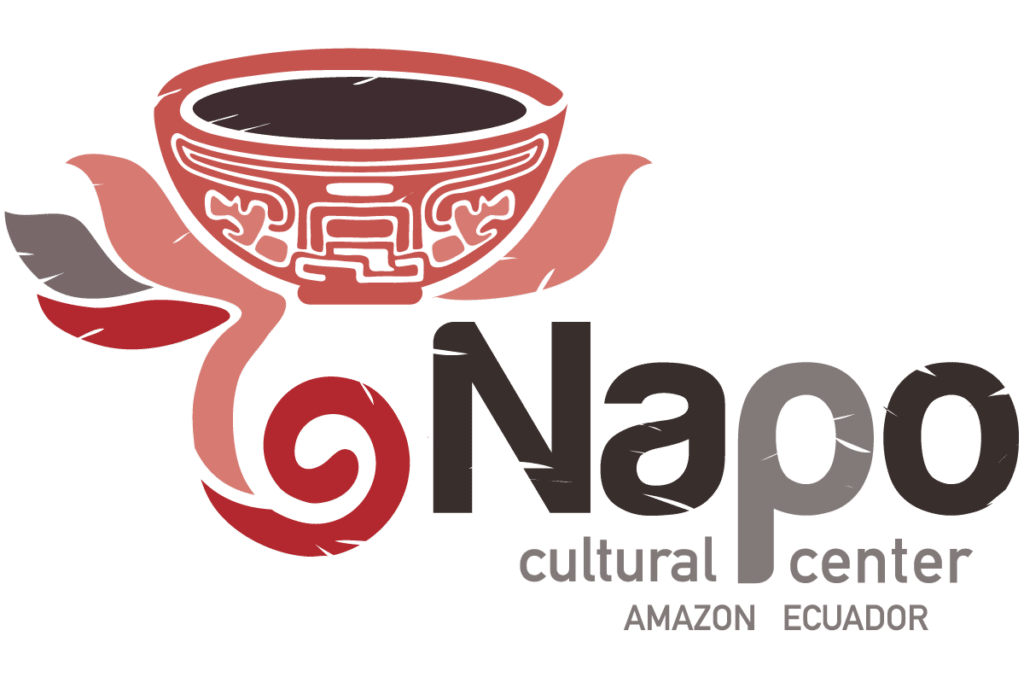July 31, 2024 Wildlife
Exploring the dense and vibrant rainforest around the Napo Cultural Center, visitors encounter one of the Amazon’s most fascinating natural phenomena – the clay licks. These remarkable sites attract hundreds of colorful parrots and other bird species, creating a mesmerizing display that captivates both avid and novice birdwatchers. But what makes these clay licks so special?

The Importance of Clay Licks
Clay licks play a crucial role in the health and nutrition of tropical birds. Found throughout the Ecuadorian Amazon, these natural formations draw large flocks of birds, particularly parrots, who consume the clay for various beneficial reasons.
Balancing the Acidic Diet
Tropical birds primarily feed on fruit, which is naturally high in acidity. This acidity is further increased by fungi affecting the fruit. If left unchecked, the high acidity could weaken the birds’ immune systems and impair liver function. The clay, with its higher pH, acts as a natural antacid, helping to neutralize the acidity in their diet, much like how antacid tablets relieve heartburn in humans.
Supplementing Minerals and Warding Off Parasites
In addition to balancing acidity, consuming clay provides essential minerals and nutrients that birds might not get from their regular diet. Minerals like magnesium and salt are vital for their health. Moreover, the clay helps detoxify their bodies, acting as a natural remedy against toxins, parasites, and pathogens.
Experiencing Clay Licks at Napo Cultural Center
The Napo Cultural Center is ideally located near some of the most impressive clay licks in the Amazon. Visitors can enjoy this unique natural event up close, offering an unforgettable addition to their rainforest adventure.
Morning Canoe Trips
A short canoe trip down the Napo River brings visitors to these vibrant clay licks. Early mornings, especially on sunny and dry days, are the best times to witness hundreds of parrots flocking to the clay walls. This spectacle is one of the highlights of a visit to the Napo Cultural Center, providing an unparalleled opportunity to observe these birds in large numbers.
Canopy Observation
For those who want to delve deeper into the avian world of the Amazon, the 135-foot Kapok Observation Tower offers an exceptional vantage point. Ascending into the canopy, the tower immerses visitors in the heart of the birdlife that thrives in the upper layers of the rainforest. This experience complements the clay lick visits, offering a broader perspective on the diverse bird species inhabiting the area.
Bird Species at Napo Clay Licks
Yasuni National Park, home to the Napo Cultural Center, boasts close to 600 bird species. Here are some of the parrot species that visitors can expect to see at the Napo clay lick:
Mealy Amazon Parrot (Amazona farinosa)
Known for its size and green plumage, the Mealy Amazon Parrot is a frequent visitor to the clay licks. These birds are social and often seen in large flocks.
Blue-headed Parrot (Pionus menstruus)
With its striking blue head and green body, the Blue-headed Parrot is a colorful addition to the clay lick gatherings. These parrots are relatively easy to spot and identify.
Yellow-crowned Amazon Parrot (Amazona ochrocephala)
This species is distinguished by the bright yellow crown on its head. The Yellow-crowned Amazon Parrot is known for its loud calls and vibrant presence at the clay licks.
White-eyed Parakeet (Psittacara leucophthalmus)
These parakeets are characterized by their distinctive white eye-rings. They are smaller than the Amazon parrots but equally fascinating to observe.
Dusky-headed Parakeet (Aratinga weddellii)
With their subtle coloration, Dusky-headed Parakeets blend into the green foliage but can be seen in groups at the clay licks, adding to the diversity of species.
Conclusion
The clay licks of the Amazon rainforest are a testament to the intricate balance of nature and the interdependence of species within this ecosystem. At the Napo Cultural Center, visitors can witness this remarkable natural phenomenon and gain a deeper understanding of the ecological dynamics at play. Whether observing from the riverbank or the heights of the canopy tower, the experience of seeing these vibrant birds in their natural habitat is truly unforgettable.




